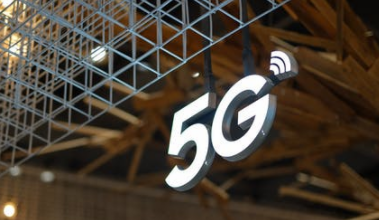
Aria Thomas
Apr 07, 2022 17:06

An option chain is a bar chart that displays the price and activity of all of the listed options for the underlying security that has been chosen for analysis.
Options trade on the open market in the same way that stocks do, except that extra data points are shown that are unique to options.
This article will provide you with a thorough grasp of the Options chain, allowing you to make the best trading choice possible.
The phrase "option chain" refers to a list of all currently available option contracts on a certain asset, such as a stock, commodity, index, or currency. The list includes both put and call options on a single underlying asset and other pertinent information such as strike prices, expiration dates, and Open Interest. Generally, traders benefit from option chains because they assist them in understanding the market and responding effectively and fast.
An option chain sometimes referred to as an options matrix, is a list of all possible options contracts on certain securities. Typically, the chain will be classified by expiry date and divided into calls and puts.

An option chain contains extensive quotation and price information, in contrast to an options series or cycle, which only indicates the possible strike prices or expiry dates.
The term "option chain" is also used to refer to the options matrix. Several expert traders can readily determine the direction of market movements using the options matrix. Additionally, Option Matrix enables users to evaluate and discover low or high liquidity locations, and typically, it restricts traders' ability to assess the depth and liquidity of certain strikes.
Some of the major features of the option chain are as follows:
Contract name: The unique name given to the contract for identification.
Last trade date: It indicates the specific date and time of the last transaction of the specified securities.
Strike price: The strike price is critical information regarding an option contract. The strike price of an option is the agreed-upon price at which the buyer will purchase or sell the underlying securities on a specified future date.
Last traded price: The most recent price at which the underlying security (of the option contract) was traded, typically the stock's closing price at the end of the day.
Bid price: The bid price represents the market's highest offer for the options contract. In other words, it is the most favorable price at which a trader is willing to acquire an option contract.
Ask price: The asking price represents the seller's highest bid in the market for the options contract. In other words, it is the most advantageous price at which a trader is willing to sell an option contract.
Change in last traded price: This indicator indicates the difference between the option contract's most recent last traded price and its prior last traded price. If the newest last traded price is greater than the last traded price, the change is deemed positive, and vice versa.
Volume: This metric reflects the number of contracts of a certain option contract traded in the market within a specified time. Increased volume suggests that the option contract is more liquid in the market.
Open Interest: "Open Interest" refers to the number of open positions in an option contract. The term "open position" refers to one that has not been closed out, exercised, or expired.
Several significant benefits of the option chain include the following:
It provides an overview of all relevant facts for a stock option in a single window.
It may be further studied to get valuable insights about the stock and forecast its future movement.
1. Access to Option Contracts is facilitated: Index Option chain access is really simple and quick from the PML app. To access the option chain, just click on the Market Indices widget.
2. Trade More Effortlessly: You no longer need to add option contacts to Market watch to choose which option to trade. Because the options chain displays all available option contracts together with pertinent information, you can simply choose the appropriate option and trade more quickly.
3. Access to all expiries: The option chain provides access to all strike prices for all expiries of certain underlining.
4. Make an Informed Decision: Our option chain is brimming with market knowledge such as Option Greeks, Open Interest, etc. Now you can study the facts and make the best trading choice possible.
Investors may use options contracts to acquire or sell an asset at a predetermined price. Since options draw their value from the underlying security or stock, they are classified as derivatives.
The chains are classified into two categories: calls and puts. A call option entitles you (but not obliges you) to acquire 100 shares of the underlying stock at a specified price and on a specified date. Additionally, a put option provides you the right (but not the responsibility) to sell 100 shares at a certain price up to a specified date. Always, call options are displayed first.
Options for Expiration Dates have a range of expiration dates. For instance, you may purchase a call option on a stock with an April expiration date or another with a July expiration date. Options having fewer than 30 days remaining to their expiration date will soon lose value due to the reduced time available to execute them. Columns in an option chain are organized in the following order: strike, symbol, last, change, bid, ask, volume, and Open Interest.
Each option contract, like the underlying stock, has its symbol. Contracts for the same stock with varying expiration dates have varying option symbols.
The striking price is the price at which you may purchase (in the case of a call) or sell (in the case of a put) (with a put). Call options with a greater strike price are always more affordable than calls with a lower strike price. For put options, the converse is true—lower strike prices likewise translate into lower option prices. To be executable, options require that the market price exceed the strike price. For instance, if a stock is now selling at $30.00 per share and you purchase a $45.00 call option, the option is worthless until the market price exceeds $45.
The last price column indicates the most recent transaction, while the change column indicates how much the latest deal differed from the previous day's closing price. Bid and ask to indicate the current prices at which buyers and sellers are ready to deal.
Consider options (like with stocks) as massive online auctions. Buyers are only willing to pay a certain amount, and sellers are only prepared to take a certain amount. Negotiation occurs on both sides until the bid and ask prices begin to approach each other.
Finally, either the buyer accepts the given price or the seller accepts the buyer's bid, completing the deal. With certain infrequently trade options, the bid and ask prices may be very dissimilar. Purchasing an option of this kind might be a significant risk, even more so if you are a beginner options trader.
The premium is the price of an options contract; it is the upfront cost a buyer pays to the seller through their broker to acquire the option. Option premiums are stated per share, which means that each option contract represents one hundred shares of the underlying stock. For instance, a $5 premium on a call option would require the investor to spend $500 ($5 * 100 shares) for the call option to purchase the stock.
The premium on the option regularly swings in response to changes in the underlying stock's price. These variations are called volatility, and they affect the chance that an option will be lucrative. If a stock's volatility is minimal and the strike price is significantly different from the stock's current market price, the option has a low likelihood of being profitable at expiration. If the probability of the option becoming lucrative is low, the premium or cost of the option is low.
On the other hand, the possibility that a contract will be lucrative increases the premium.
Other variables affect the price of an option, including the remaining time on an options contract and the contract's expiration date. For instance, the premium will fall as the options contract approaches its expiration date since there will be less time for the investor to benefit.

On the other hand, options with a longer remaining time to expiration have a greater chance of the stock price moving above the strike price and becoming lucrative. Consequently, options with a longer remaining period often carry a greater premium.
While the volume column indicates the number of options traded on a specific day, the open interest column indicates the number of outstanding options. Open Interest is the total quantity of options on a stock, including options opened in the preceding days. A high open interest indicates that investors are interested in the stock at a specified strike price and expiration date.
Open Interest is critical because investors want to see liquidity, which means there is sufficient demand for an option to enable them to join and exit positions quickly. However, large open Interest does not always indicate that the stock will increase or fall since there is always a seller for every buyer of an option. In other words, just because there is a big demand for an option does not always guarantee that those investors are accurate about the stock's path.
The following are the components of the options chart that will assist you in quickly reading the options chain chart. Consider the following:
Typically, options are classified into two types:
A call option is a contract that grants the holder the right to purchase the underlying asset at a defined price and on a specified date.
Put Option
Additionally, a put option is a contract that extends the right to sell the underlying at a certain price and on a predetermined date.
The term "strike price" refers to the price at which buyers and sellers of an Option agree to enter into a contract. When the option price exceeds the strike price, the transaction becomes lucrative.
In-the-Money or ITM In-the-Money ATM is used when the call option's strike price is less than the current market value.
If the current market price is less than the stock price, the put option is the In-The-Money ATM.
At-The-Money, or ATM, refers to a circumstance in which the strike price of a put or call option is equal to the underlying asset's current market price.
When the strike price of an option is more than the current market price of the underlying asset, this is referred to as Over-The-Money.
Similarly, if the strike price is less than the underlying asset's current market price, the put option is said to be at OTM.
The term "Open Interest" refers to the Interest held by traders at a certain strike price. The greater the quantity, the greater the Interest among traders in the option's real strike price. Due to increased trader interest, there will be enough liquidity to trade your view.
It summarizes any noteworthy modifications to the Open Interest before the expiration date. The significant difference in OI indicates that contracts have been terminated, exercised, or squared off.
The volume reflects the trader's interest in the market, and the total number of contracts of an option at a certain price transacted.
Daily volume is computed and may even assist in determining the present level of Interest among different traders.
Implied Volatility or IV Implied Volatility indicated the direction of the price movement. High implied volatility indicates that there will be significant price movements, while low implied volatility indicates that there will be few or minor price changes.
"LTP" refers to an option's most recently traded price.
"Bid Price" refers to the actual price stated in the most recent purchase order. A higher price than the Last Traded Price (LTP) may signal that there is more demand for options.
The Bid Quantity column indicates the total number of purchase orders placed for a certain strike price. However, it provides information about the current demand for an option's strike price.
The Ask Quantity column indicates the total number of open sell orders at a certain strike price, denoting the alternatives' availability.
The Ask Price is the price quoted in the most recent sell order.
The following are some of the purposes for which the option chain of a certain security is used:
It enables traders to assess the liquidity and depth of an option contract at a certain strike price.
It may be used as an early warning system for index volatility.
It may be quite beneficial when developing an option strategy, such as strangles, with many strike prices.
The following are some of the purposes for which the option chain of a certain security is used:
It enables traders to assess the liquidity and depth of an option contract at a certain strike price.
It may be used as an early warning system for index volatility.
It may be quite beneficial when developing an option strategy, such as strangles, with many strike prices.
Reading options chains is an important skill since it may help you make better investing decisions and profit from your trading activities more regularly. The option chain enables you to rapidly see the many possibilities available for a specific asset. It aids the trader in market analysis by monitoring liquidity, trend, volume of transactions, open positions, and price index movement. It enables the trader to react rapidly in the case of an unexpected market shift.
A call option is a contract that gives you the right, but not the duty, to purchase an underlying asset at a certain price and within the option's specified expiration date.
On the other hand, a put option is a contract that provides you with the right but not the responsibility to sell an underlying asset at a certain price and within the option's expiration date.
The term "Open Interest" refers to the Interest held by traders at a certain strike price. The greater the quantity, the greater the Interest among traders in the option's real strike price.
It is situational. If you are logged onto your broker's trading platform, you may be able to make an order through the options chain (assuming you are approved to do so and have the necessary funds and account type).

Apr 07, 2022 16:17

Apr 07, 2022 17:16